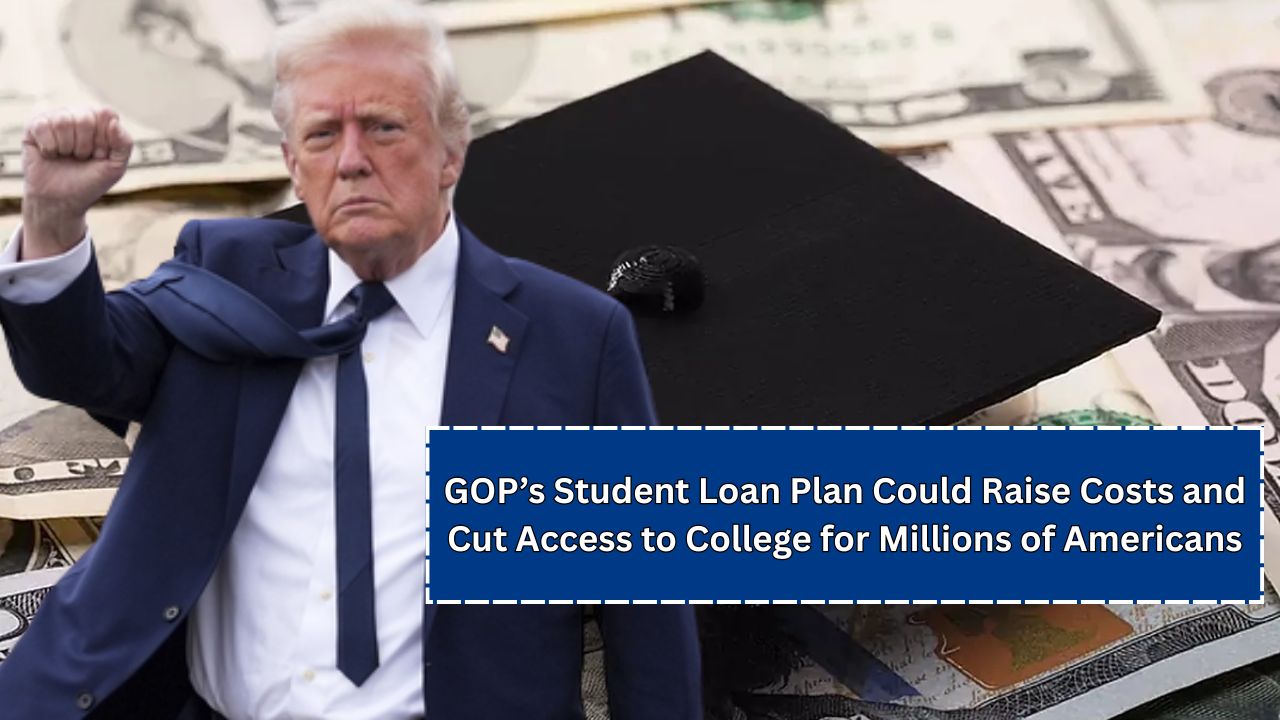In a sweeping proposal that could reshape the landscape of higher education in the United States, House Republicans have introduced a comprehensive plan to overhaul the federal student loan system. Touted as a cost-cutting measure, the proposal aims to slash government spending by over $330 billion—but critics warn that the reforms could put college out of reach for many Americans, especially low-income and part-time students.
Key Components of the GOP Proposal
1. Tighter Federal Loan Limits
The proposal would impose strict caps on the amount students can borrow through federal programs:
- $50,000 for undergraduate students
- $100,000 for graduate students
- $150,000 for professional students
Additionally, the Grad PLUS loan program would be eliminated, and Parent PLUS loans would face tighter restrictions. These changes could significantly limit borrowing capacity for families that rely on federal aid to cover rising tuition costs.

2. Consolidation of Repayment Plans
The plan consolidates the existing four income-driven repayment (IDR) options into one: a “Repayment Assistance Plan” that requires borrowers to make payments for up to 30 years before loan forgiveness kicks in. This is a major departure from the Biden administration’s SAVE Plan, which allowed for forgiveness after just 10 years under certain conditions and capped payments at 5% of discretionary income.
The proposed removal of the SAVE Plan has raised concerns among advocates who fear longer repayment periods will lead to increased financial hardship for borrowers.
3. Institutional Accountability Measures
In a move to shift more responsibility to colleges, the plan introduces a “skin in the game” policy. Under this measure, colleges would be partially on the hook for defaulted loans if their graduates show poor repayment outcomes. While intended to push institutions to focus on student success and job placement, some educators argue this could disproportionately hurt underfunded schools serving disadvantaged communities.
4. Pell Grant Eligibility Changes
The Pell Grant program would also see significant alterations:
- Students must enroll in at least 30 academic credit hours per year to qualify—posing a challenge for part-time or working students.
- On the other hand, Pell Grants would be expanded to cover short-term workforce training programs, aligning education with labor market demands.
Critics argue that the new enrollment requirement may exclude some of the very students Pell Grants were designed to support, particularly older students balancing education with work or caregiving responsibilities.
5. Return of Loan Collections
Pandemic-era protections, including the pause on involuntary collections like wage garnishment and tax refund seizures, are set to expire on May 5, 2025. For many borrowers already struggling with inflation and economic uncertainty, the resumption of these collection methods could add additional pressure.
Critics Warn of Decreased Affordability
Student advocacy groups and higher education experts have voiced strong opposition to the GOP proposal. “This plan may reduce federal spending, but it does so at the expense of students who can least afford it,” said a spokesperson for the National Education Association.
A key concern is the proposal’s potential to make higher education less accessible. Longer repayment terms, stricter loan caps, and tighter Pell Grant rules may discourage students—especially from low-income backgrounds—from pursuing college degrees.
Broader Policy Implications

This move reflects the broader education agenda of the Republican Party, including efforts under former President Donald Trump to minimize the role of the Department of Education and transfer student loan management to the Small Business Administration.
While the GOP claims the changes will reduce taxpayer burden and hold colleges accountable, the debate over college affordability and student debt continues to intensify ahead of the 2026 elections.
What’s Next?
The GOP plan is currently under committee review and could be subject to changes before a full congressional vote. Borrowers and institutions alike are closely monitoring the developments.
Learn More:
- Federal Student Aid – U.S. Department of Education
- Congressional Budget Office (CBO) – Cost Analysis of GOP Plan
- Consumer Financial Protection Bureau (CFPB) on Student Loans
- CBS News Coverage
- NPR Coverage
This article has been carefully fact-checked by our editorial team to ensure accuracy and eliminate any misleading information. We are committed to maintaining the highest standards of integrity in our content.

Outside of work, he enjoys playing chess, following cricket, and writing short stories. His commitment to integrity and in-depth analysis strengthens OTE News’ mission of providing trustworthy journalism.




